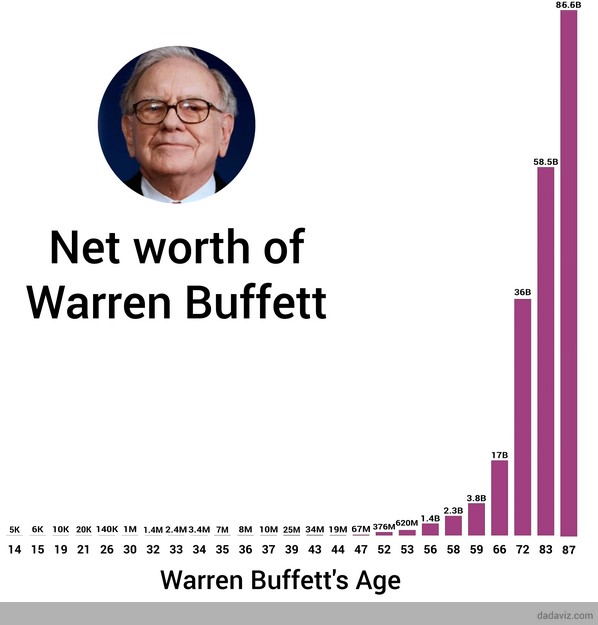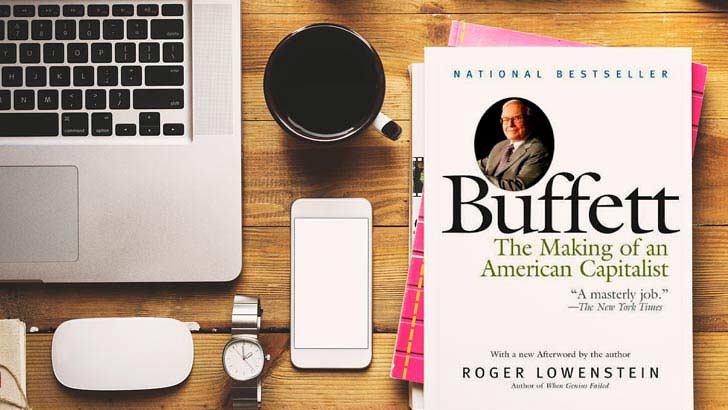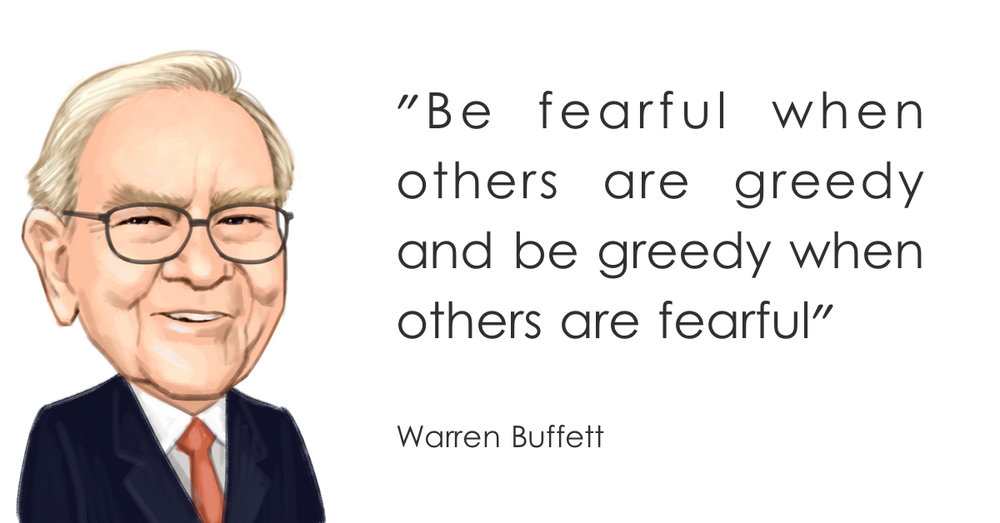Warren Buffett is probably the famous investor on the planet.
Over the years, the legendary investor has been quoted on life, investing and success. Gems include:
- “Be fearful when others are greedy and greedy when others are fearful”
- “Price is what you pay. Value is what you get.”
- “Time is the friend of the wonderful company, the enemy of the mediocre.”

Buffett is popular because of his ability to strip finance of its complex jargon and clearly explain it. There are articles, podcasts, and books dedicated to studying his every word.
To fully appreciate his lessons, one of the best investments you can make is to understand his story.
This is important. Because while some of his ideas may seem simple on the surface, the context in which they were formed is anything but.
Reading his biography is like taking a shortcut – for very little money and a few hours, you can learn from Buffett’s decades of accumulated experience.
“Buffett: The Making of an American Capitalist”, written by Roger Lowenstein, is a fantastic biography of the Oracle of Omaha.

The book takes you through his journey: how Benjamin Graham deeply influenced his investing philosophy, his obsession with work and the habits that made him successful, and the story of his most successful investments.
Apart from being an absorbing read, it’s also full of insights for any investor.
Here are two important lessons you should know.
This article was submitted by a Guest Contributor.
1. The Power of Compounding
Warren Buffett once said: “My life has been a product of compound interest.”
Take it at face value and it’s a statement of how Buffet amassed wealth. It’s the snowball built at the top of a very long hill, which grows into an avalanche.
But there is another resource that compounds — knowledge.
There is another resource that compounds — knowledge.
Compounding investments was his desired outcome. Compounding knowledge was the habit that got him there.
And one thing that jumps out from the biography is Buffett’s voracious appetite for accumulating knowledge.
He spent most days sitting in his office reading. He read Wall Street Journal and Financial Times cover to cover. Then he moved on to a variety of magazines and industry journals. Next, huge reams of financial statements.
What others considered work was Buffett’s idea of fun.
He read Moody’s manuals — heavy volumes containing brief reports on companies — with the “zest of a small boy reading comics”. An exciting night was to go home and read a stack of annual reports.
Buffett vacuumed knowledge on hundreds of companies. And he stored it in his mental library, in preparation for making a decision when an opportunity arose.
Buffett vacuumed knowledge and stored it in his mental library
When it did, he trusted his own eyes and did his own thinking. Buffett never relied on analyst summaries, and preferred to see the raw data himself.
The immense knowledge, built up by steadily compounded knowledge, meant Buffett had an unparalleled ability to uncover opportunities that others overlooked.
Early in his career, he uncovered stocks trading at rock-bottom PE ratios.
Lowenstein recounted Buffett’s realisation: “It seemed too good to be true; if the stocks were so cheap, Buffett figured, somebody ought to be buying them. But slowly, it dawned on him. The somebody was him. Nobody was going to tell you that Western Insurance was a steal; you had to get there on your own.”
Takeaway for investors
Buffett said it best: “Successful investing takes time, discipline and patience. No matter how great the talent or effort, some things just take time: You can’t produce a baby in one month by getting nine women pregnant.”
You can’t produce a baby in one month by getting nine women pregnant
To reap the effects of compounding knowledge, you have to build good habits to get smarter.
Read 30 minutes a day, and knowledge will build up like compound interest.
2. Thinking long-term

“Be fearful when others are greedy and greedy when others are fearful.”
This is one of Buffett’s most popular sayings. It is easy to parrot but challenging to put into practice. So let’s unpack it through a story of one of his best investments of all time.
The story of GEICO
In 1976, GEICO was on the verge of bankruptcy.
It was a giant in the auto insurance industry. But a new generation of leaders underestimated GEICO’s claims losses resulting from inflation. And they tried to fix the problem by shifting their focus away from what made it so successful in the first place.
As a result, it reported a staggering $126 million loss for the previous year. The stock plummeted from a high of $42 to just under $5 – an 88% drop.
If GEICO collapsed, it would be the biggest failed insurer ever. Buffett equated it to “the Titanic of the insurance world”.
At the moment when investors were piling for the exit door, Buffett’s interest in the company was most piqued. He had long sought to be an owner of GEICO.
His mentor and teacher, Benjamin Graham, had invested in GEICO in the 1940s and loved the stock. In 1952, Buffett met Lorimer “Davy” Davidson, who would later become the CEO.
During that meeting, Buffett learned about the insurance industry and GEICO’s competitive advantages. It bypassed traditional agents and sold policies directly to customers. It also focused on acquiring high-quality customers such as government bureaucrats and professors. This allowed GEICO to offer low prices while also earning a superior profit margin.
But the time wasn’t right. So Buffett filed GEICO away in his mental library, patiently waiting for the right opportunity to emerge more than 20 years later.
Buffett’s genius was to see GEICO’s value even when it was on life support and almost everyone else was writing it off. He saw GEICO as “a magnificent business going through a time of trouble”. He could envision them making it out alive.
Lowenstein writes about Buffett’s thought process:
“GEICO had the same low-cost method of operation that had always given it an edge. In rough terms, GEICO spent fifteen cents of each premium dollar on expenses, whereas other insurers spent an average of twenty-four cents. This enabled GEICO to charge less, and thus be more selective about choosing customers. In recent years, of course, GEICO had abandoned this surefire formula.
But its underlying cost advantage was intact. Buffett figured that if it survived the present crisis, its profitability would return.”
Buffett also brought in Jack Byrne, a top insurance executive, to revive the company. With his belief in Byrne and GEICO’s economic moat, Buffett pounced on GEICO’s share price. He backed up the truck, buying $4.1 million in GEICO common shares and another $19.4 million in convertible preferred stock.
Buffett’s thought process was clear, but the decision still left him “light-headed”. Thankfully, it turned out to be one of his best investments of all time.
Within six months, Buffett quadrupled his investment. He continued adding to his portfolio over the next four years. In 1980 he invested a total of $45 million. 15 years later, it had grown to be worth a stunning $2.4 billion.
Takeaway for investors
It’s difficult to buy — and buy big — when everyone else is screaming to sell.
Buffett’s GEICO investment underscores how investors who can remove emotion from a decision gain a superior edge. As everyone else was panic selling, Buffett focused on the fundamentals.
investors who can remove emotion from a decision gain a superior edge
By having a strong understanding of both the business and the key people running it. This gave him the confidence to make a big bet.
Conclusion
“Buffett: The Making of an American Capitalist” is a fantastic read and is full of insights for the everyday investor. You’ll come away with it with a deeper understanding and respect for why Buffett is one of the greatest investors of all time.